1 The Score – Please Please Me
One strain of British music of the mid-60s, the link between mod and psychedelia, has become known as “freakbeat”: a melee of hard, driving rhythm, crashing power chords, guitar feedback and overwrought vocals that approximated the soulful stylings of Eric Burdon or Steve Marriott. The Score’s version of Please Please Me – a centrepiece of the Manchester-based band’s live set – is a powerful deconstruction of 1966 pop that directly references the Rolling Stones’ (I Can’t Get No) Satisfaction and the Yardbirds’ Shapes of Things. And it’s a knowing cover of the song that had broken the Fab Four in Britain. It was as if the Score were winking at their audience, saying: music sounded like that then – just three years earlier! – but this is what it sounds like now. Please Please Me’s descending riff, played by John Lennon on harmonica on the Beatles’ record, was replaced with George Harrison’s chiming guitar figure when the band played the song live. The Score do the same – it’s just more rock.
In 1969, the Beatles would themselves laugh at how far they’d come since Please Please Me in 1963, parodying the sleeve of their debut album by posing on the stairwell of EMI’s London headquarters.
2 Stevie Wonder – We Can Work It Out
The Beatles’ 1965 original was a classic Lennon-McCartney two hander: McCartney wrote the diplomatic upbeat verses and chorus, Lennon the more forthright, spiky bridges. There were time-signature changes and interesting instrumentation in the form of a harmonium, presaging the experimentations of Revolver. Like Otis Redding’s crazed demolition of Day Tripper (the original of which appeared as a double-A side with We Can Work It Out), Wonder’s classy reading shows the indestructibility and inherent joy of the Beatles’ songs. There’s a gleeful disrespect shown to the original – Wonder’s saying, I’m not “Little” Stevie any more (it was 1970, he was 20) and he’s moving pop music on. It’s got everything we associate with the boy Wonder’s best material – hook after hook, a funky clavichord, a harmonica solo. Wonder has performed it at several Beatles-related events, most recently at an event to mark the 50th anniversary of the Beatles’ appearance on The Ed Sullivan Show, and even at the White House in 2010 in front of Barack Obama and Paul McCartney.
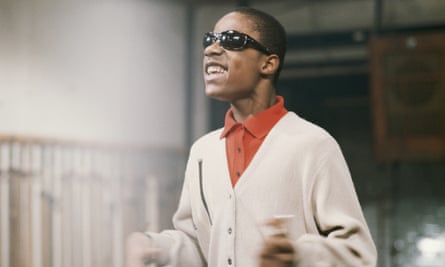
3 The Harvey Averne Dozen – The Word
You want prolific? In 1965, the Beatles made two albums and a No 1 single that didn’t appear on either, and a feature film, and toured the world. Their second album of the year, Rubber Soul, was a game-changing collection in terms of its songwriting, arrangements and sound palette. The Word was not perhaps a stand-out track, but is an early iteration of the message John Lennon would expand upon in All You Need Is Love. New York vibraphonist and bandleader Harvey Averne focused not on the words, but on The Word’s inherent grooviness. And it’s impossible to write about his version, really, without using the word “groovy”. He recorded this souped-up take on The Word on his 1968 album Viva Soul, released on Atlantic, with an arrangement by the Latin jazz trumpeter Marty Sheller, best known for his hits with Mongo Santamaria. It’s a potent reminder to music makers of a scientific fact: no record was ever made worse by the inclusion of vibraphone. I can imagine hearing the Beatles’ version in the Bag O’ Nails club in Soho. But imagine stepping into a club in New York and hearing this. It was records like this that really did make the 60s swing.
4 Cornershop – Norwegian Wood (This Bird Has Flown)
Indian music first entered the western pop firmament after George Harrison’s interest was piqued when the Beatles encountered a group of Indian musicians during the filming of Help!. For Harrison, it was the start of a lifelong interest in Indian music and philosophies. He played a sitar on Norwegian Wood, and the Beatles’ popularity was such that for a while in the mid-60s the Indian instrument became de rigueur for experimental bands. The presence of a sitar on a record was shorthand for eastern mysticism, a signal that western culture could not satisfy the adventurous spirit of youth, and was intended to signify a spiritual depth that had hitherto been missing from pop music. It’s hard, though, to see how a song such as She Loves You would have benefited from added sitar or spiritual depth.
Three decades later and Cornershop recorded this Punjabi-language version of Norwegian Wood. It’s otherwise a straight cover (and according to reports, well received by Paul McCartney and Yoko Ono). It’s cheeky, but affectionate. Are they poking fun at the Beatles, mocking their clumsy attempt to incorporate Asian elements into their music? Perhaps, but I think they’re also saying, the Beatles are our forebears, and look how far we’ve come! Because the wonderfully inventive Cornershop – alias Tjinder Singh and Ben Ayres – are at their creative best when they mix up their eastern and western influences, as on their hit Brimful of Asha, which sits alongside Norwegian Wood on the 1997 album When I Was Born for the 7th Time.
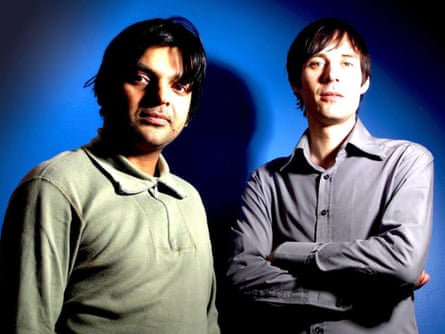
5 Junior Parker – Tomorrow Never Knows
Junior Parker was a Memphis R&B veteran best known for recording the original version of Mystery Train, which became a hallowed rockabilly classic after it was covered by Elvis Presley during his Sun Records period. Parker covered several Beatles songs on his 1970 album The Outside Man, but Tomorrow Never Knows was a particularly brave choice. It was brave because the track is arguably the most out-there moment in the Beatles’ oeuvre. Its mesmerising effect was primarily achieved by the sheer inventiveness of the recording. John Lennon was said to have wanted to sound like 100 chanting Tibetan monks. Engineer Geoff Emerick’s solution was to put his voice through a Leslie rotating speaker, usually used with Hammond organs. There are also Stockhausen-style saturated tape loops, backwards guitars and cymbals and super-compressed drums. By contrast, Parker strips those dazzlingly original production techniques away to reveal a dazzlingly original song. There are Lennon’s destruction-of-the-self lyrics, based on The Tibetan Book of the Dead. But Tomorrow Never Knows remains a raga-like drone, based around a single chord. Not a problem for a Parker – many blues compositions have the same simplicity. The beautiful starkness of Parker’s recording – the space he creates – allows the song to breathe. The song is no longer claustrophobic, but it is, somehow, just as mindblowing. Perhaps that’s because we can derive pleasure from a good cover version through our memory of the original, which we “hear” in our mind.
Footnote: the Chemical Brothers were deeply influenced by Tomorrow Never Knows, regarding it as a template for their music. They covered it themselves, and often used Parker’s version as an intro tape.
6 Fats Domino – Lady Madonna
Part of the pleasure of listening to this is that Paul McCartney wrote Lady Madonna with Fats Domino in mind. So we have the Beatles paying homage to one of their early musical heroes, and that hero recording a version by way of thanks. As with Little Richard’s 1970 recording of I Saw Her Standing There, it’s fascinating to hear a rock’n’roll master acknowledging his part in his pupils’ triumph. In his (almost contemporaneous) 1968 recording, the great New Orleans singer and pianist delivers a straight cover, sticking closely to the Beatles’ tight, everything-in-its-place arrangement, even down to the intro lifted from Humphrey Lyttelton’s Bad Penny Blues. But it’s bigger, brassier and heavier, and sounds very definitely American, whereas the Beatles always sound British, even at their most raucous.
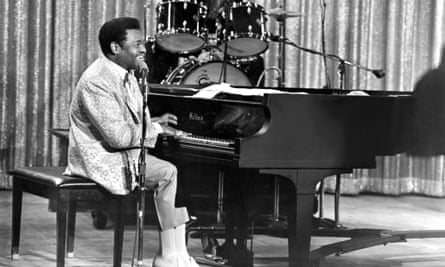
7 The Paragons – Black Bird Singing
Treasure Isle producer Duke Reid and Kingston vocal group the Paragons (featuring John Holt) take Blackbird – a solo acoustic performance by Paul McCartney and one of the high points of the Beatles’ fractured White Album – and turn it into a completely different beast. Horns, a deep bassline and beautiful harmonies all chip in to make a rocksteady gem. I love that they even changed the title, typical of 1960s Jamaica’s ramshackle record industry. The Paragons’ reggae cover has added curiosity value for Beatles fans in that McCartney was interested in the genre at the time, and the Beatles even had a go themselves with Ob-La-Di, Ob-La-Da.
8 The Unthanks – Sexy Sadie
Five decades on, how do you cover a Beatles song? And what’s the point? Here are the Northumbrian folk ensemble the Unthanks to show how it’s done. They don’t do anything fancy to Sexy Sadie, they just sing it. There’s no need to over-emote like some X Factor contestant on a sugar rush. John Lennon didn’t indulge in melisma – he sang the notes. Be yourself and get to the heart of a song – Rachel Unthank understands that. The Unthanks rearrange the song, too, rather than hamfistedly recreate the sound of the original – it’s not karaoke. There’s a new coda, one that plunges into the depths of Sexy Sadie’s sinister chords. Should we class the Unthanks’ version as folk? If you like. The Unthanks specialise in northern English folk music – and perhaps that is, ultimately, what the Beatles were making. The Unthanks weren’t the only folkies to have a crack at Beatles songs. Back in 2006 there was Rubber Folk, a collection of covers of songs from (the Beatles’ folkiest album) Rubber Soul by British folk artists.
9 Al Green – Get Back
Get Back was a late foray into back-to-basics rock that proved the Beatles could still cut it as a band, their acrimony put temporarily on hold so as not to make guest player Billy Preston uncomfortable. It was the undeniable high point of the blighted Let It Be project, a song that all four Beatles could throw themselves into and rediscover their inner rock’n’roller. Al Green’s version of the song was sequenced straight after his own composition Get Back Baby on his 1969 album Green Is Blues, the first of a series of fine albums Green made with producer Willie Mitchell. Here Green stakes his claim to be one of the greatest soul singers – his voice imploring, pleading, but lighter than air, full of life, his staccato interjections dancing around the beat. He’s backed by the Hi Records rhythm section, a Memphis five-piece combo that played super-tight: it’s funky southern soul with no slack. It’s recognisably the Beatles’ groove, but Green takes it to another level – the Fabs’ own musical roots were in Memphis rhythm and blues, but they never played like this.
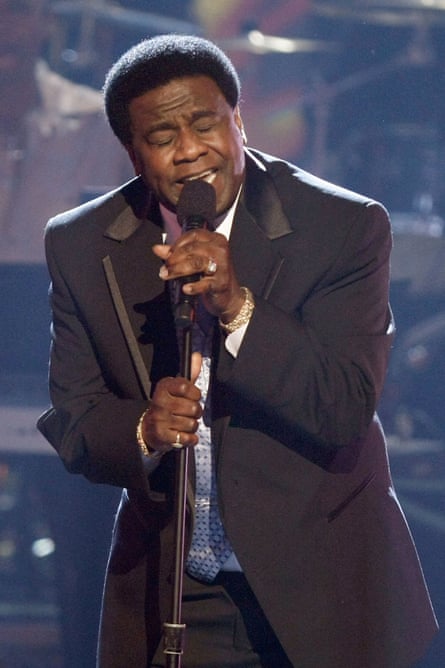
10 Here Comes the Sun – Charles Wright
George Harrison’s songs were beacons of optimism on Abbey Road, the last Beatles album. Here Comes the Sun is one of those songs that is practically impossible to cover badly (though Coldplay, Travis and Bon Jovi have all had a go). The 1972 version by Charles Wright – freshly solo after several years fronting LA funk pioneers the Watts 103rd Street Rhythm Band – is imbued with the human warmth this exquisite song warrants. Lovely as Harrison’s typically precise guitar line is, Wright recognises that the song is the thing, and doesn’t trouble himself with replicating it in any way. He just opens it up and rolls with it, and it’s a joy. It builds and builds, and Wright never lets his extemporising get in the way. Richie Havens’ 1971 version of Here Comes the Sun is equally loose-limbed, but Wright’s recording pips it for lightness of touch and rosy glow.
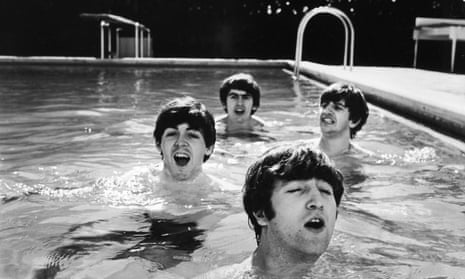
Comments (…)
Sign in or create your Guardian account to join the discussion